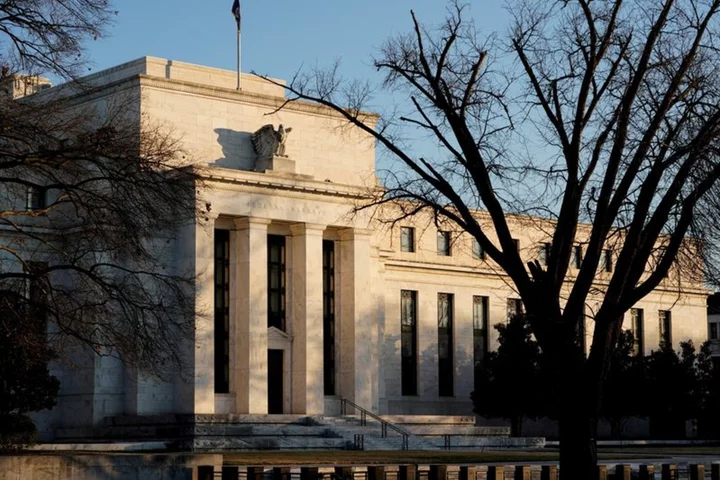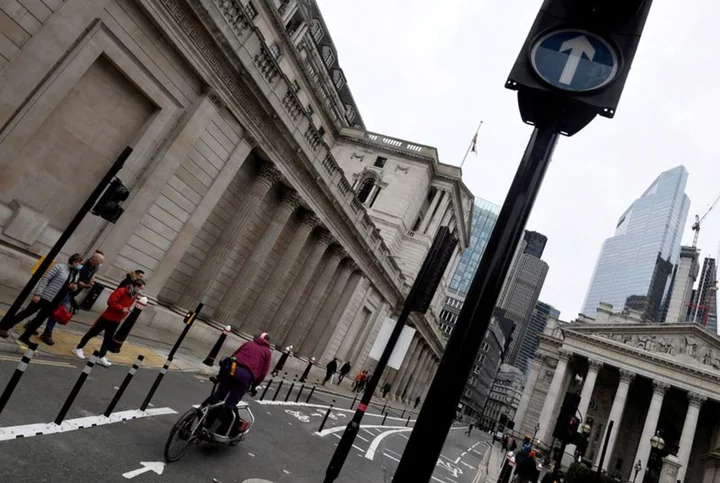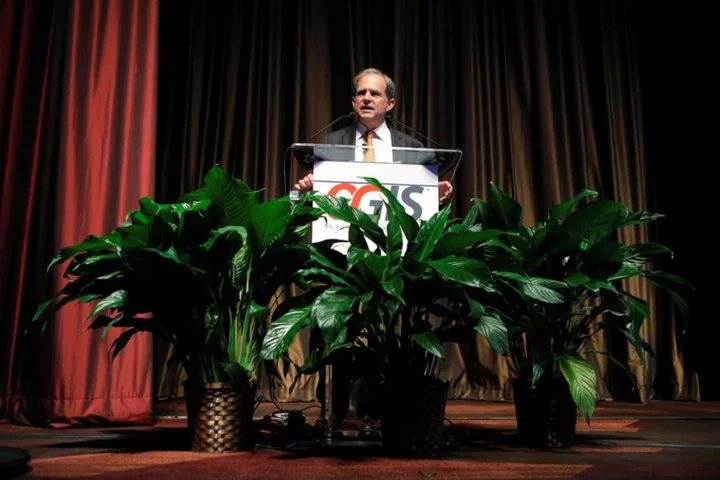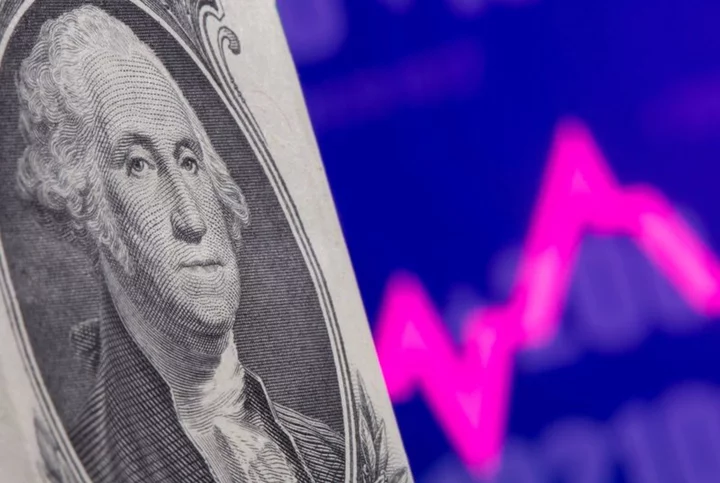By Mike Dolan
LONDON If the notorious 'term premium' is evaporating again, then last month's bond rout may just have been a nightmare.
But it may require monitoring Treasury and Congress as much as the Federal Reserve to make sure it is not a recurring dream.
After a brutal squeeze higher in long-term U.S. borrowing rates in October, Treasury yields suddenly U-turned and plunged by more than half a percentage point late last week on signs of a cooling labor market and both a pared and better-calibrated government borrowing schedule into 2024.
Described by Fed governor Christopher Waller on Tuesday as the central banking equivalent of an 'earthquake', the yield shock was only matched by the speed with which it reversed. All of October's 50 basis point 10-year yield spike has disappeared again and almost half of the jump since midyear is gone too.
Rising yields have continually drawn investors - who appear to have loaded up on bonds for much of the year to lock in the highest fixed-rate coupons in more than a decade. Their faith in Treasury yields cresting around 5% was underpinned by data on ebbing jobs growth and related bets on the Fed moving to cut rates by the middle of 2024.
And even if real, long-term neutral rates were now as high as 2% and the Fed gets average inflation back to 2% - as former U.S. Treasury Secretary Larry Summers suggested this week - then there's still juice in 10-year Treasury yields now at 4.5% - at least for investors willing to swallow some short-term pips.
But the extra twist in the October selloff was the emergence of a long-absent buy-and-hold premium - a so-called 'term premium' demanded by bond investors to hold long-term bonds to maturity rather than just rolling short-term securities.
Although slightly amorphous, the term premium is meant to capture an element of uncertainty over what can go wrong over the life of a decade-long bond beyond current assumptions about the trajectory of rates and inflation.
While it can involve extrapolating current market stress, it typically points to debt supply concerns. In this instance, it seems to have riffed off multi-year U.S. deficit projections, a fiscal impasse in Congress and a gradual withdrawal of the Fed as buyer as it winds down a pandemic-bloated balance sheet via 'quantitative tightening'.
The New York Fed's favoured model has mostly been below zero for the past 10 years, due in part to serial 'quantitative easing' programs from the Fed. But it re-emerged with a vengeance over the past month.
Climbing by almost 1.5 percentage points between midyear and an 8-year peak near 0.50 last month, the premium seems to reflect markets struggling to adequately price a deluge of U.S. government debts sales alongside the Fed's 'higher for longer' mantra and relentless QT.
But it too has fallen back sharply during the big reversal of the past week - with the NY Fed estimate more than halving from October's peak to just 20 basis points as of Friday.
How much does this ephemeral premium matter, or is it just getting swept along with the ebb and flow of the market?
SWEET DREAMS ARE MADE OF THIS
What's for sure is that Fed officials from Chair Jerome Powell down the ranks are hyperfocussed on it.
Chicago Fed boss Austan Goolsbee said on Tuesday the reasons behind the recent yield spike were critical to assess as it helped the Fed understand how its own policy is working. "If that's coming from term premium and it's tightening, then we have got to take that into account."
And Fed Governor Lisa Cook seemed adamant on Monday that the term premium was the chief culprit behind the recent spike and she doubted changing Fed expectations had much to do with it.
The upshot, presumably, is that if the term premium were to return to historical norms, that added tightening of financial conditions may mean the Fed can dial back accordingly. But if the premium disappears once more - the Fed may have to resume its slog and to hang tough to see inflation fall further.
As Summers estimated this week, a term premium just back at 60-year averages would put it at 150bps - 130bps above current levels.
But to gauge if that's warranted, investors may have to turn to Treasury and Congress - and also how long the Fed can persist with QT.
At the heart of market debt supply concerns this month was fear of a developing loop. Persistent deficits, exaggerated by high servicing costs risk forcing more of the trillions in short-term bills sales to be refinanced into long-term bond maturities - baking in interest bills that, in turn, keep budget gaps and debt sales higher for longer.
And that's partly why Treasury's tax receipt windfall and reduced fourth-quarter debt tally last week, as well as its more front-loaded quarterly refunding plan, had as much an impact as the jobs data on the yield reversal.
But a looming election year, Congress still at loggerheads and a significant chance of another U.S. government shutdown don't encourage a great deal of fiscal optimism.
Morgan Stanley estimates an additional near $1 trillion in gross debt sales from G7 governments are coming down the pike next year. Net of redemptions, that's smaller $663 billion - but a 34% increase versus this year, with a 61% rise in U.S. debt sales the biggest component.
However, it said a 32% increase in new debt sales, net of redemptions and central bank purchases, to a 14-year high total of $2.45 trillion could be absorbed comfortably in a weak economic environment of ebbing rates and inflation and that marked only the fourth biggest annual increase in 15 years.
A recurring 'term premium' nightmare - or sweet dreams ahead?
The opinions expressed here are those of the author, a columnist for Reuters.
(by Mike Dolan X: @reutersMikeD; Editing by Josie Kao)









